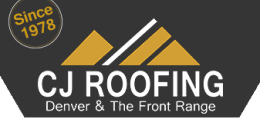The Guide to Commercial Roof Inspection & Maintenance
2/1/2016
Do you have the information you need on maintaining your commercial roof and on commercial roofing inspection? We’re here to help.
Having a high-quality roof installed on your facility is, figuratively, only the tip of the iceberg when it comes to commercial roofing. This is not a ‘set it and forget it’ scenario – the reality is that having scheduled inspections (and maintenance as needed) performed on your roof are critical to the long-term durability of your roof system. You’d never drive an expensive car until it broke down—you’d schedule regular maintenance. Roofs are the same way. In fact, most manufacturers – including CertainTeed – have scheduled inspections as a requirement in upholding a roof system warranty.
Don’t forget: scheduling regular commercial roof inspections is essential
Establishing a regular commercial roof inspection and maintenance schedule is the responsibility of the building owner. Such a schedule can provide short-term and long-term benefits. Consistent, seasonal inspections help keep small problems (such as a clogged drain) from becoming large problems (such as a roof that collapses from excess water weight). And, simply put, properly maintained roofs last longer, stretching your investment dollars and increasing the ROI on your roof.
How often should you schedule a commercial roof inspection?
Roofs should be inspected at least twice yearly, in the spring and fall.
Additionally, all roofs should be inspected after any severe weather. The roofing contractor who installed the roof membrane, in conjunction with the building owner’s maintenance personnel, should perform these inspections. Inspections consist of a visual assessment of the critical elements of a roof system. They can typically be completed within an hour or two, depending on the size and general condition of the roof.
Learn more about severe weather roof preparation >
Who should perform maintenance work?
- Any repairs and maintenance work should be performed but a roofing contractor who is authorized by your manufacturer, but the owner can help maintain the roof by ensuring that minor clean-up and maintenance procedures are performed (e.g., regular checking and cleaning of debris from roof and around drains).
- Allow only authorized personnel on the roof who understand good roof access procedures and precautions, as it’s very important to remember that one of the keys to avoiding roof damage is limiting access to the roof. Additionally, foot traffic should not be permitted on the roof in very hot or very cold weather, as this will increase the risk of roof damage.
- If the professional roofing company that installed your roof is not available, it is highly recommended that you use a company that is familiar with the roofing manufacturer’s installation instructions, experienced in performing roof inspections and maintenance, and possesses professional credentials from the manufacturer. If repairs are needed, do not perform them on your own.
Learn more about finding a trusted, reliable roofing contractor >
What should you do in the case of emergency conditions where immediate repair is needed?
In the event of an emergency condition that requires immediate repair to avoid damage to the building or its contents, a building owner should have a qualified roofer make essential temporary repairs. Unapproved repairs may void your roof system warranty, so be sure to read and understand your warranty.
If you follow these guidelines you will rarely encounter unpleasant roofing surprises, and you will be well on your way to having a roof system that performs at an optimum level. Should you have any questions about maintaining your roof, scheduling a regular commercial roof inspection, or require information on your roofing system warranty, be sure to contact the installing contractor and/or the manufacturer of your roofing system.
Click here to view and download a printable roofing maintenance Inspection Report.
